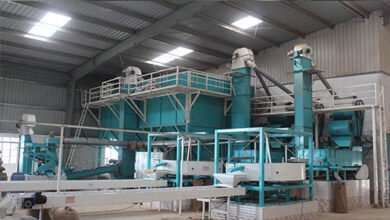
How to Utilize Renewable Energy Technologies for Sustainable Power Sources
The world is at a crucial juncture where the need for How to Utilize Renewable Energy Technologies for Sustainable Power Sources and clean power sources has never been more evident. As the consequences of climate change become increasingly pronounced and fossil fuel reserves deplete, there is an urgent call for transitioning to renewable energy technologies. These technologies hold the key to a future where power generation is both environmentally friendly and economically viable. In this comprehensive article, we will explore the multifaceted realm of renewable energy technologies, discussing their types, benefits, and strategies for their effective utilization in the quest for sustainable power sources.
The Imperative for Sustainable Power Sources
The transition to sustainable power sources is underpinned by several compelling imperatives:
Climate Change Mitigation: The burning of fossil fuels is the primary driver of greenhouse gas emissions, contributing to global warming, rising sea levels, and extreme weather events. Sustainable power sources are vital in mitigating these impacts.
Energy Security: The dependence on finite fossil fuel reserves leaves nations vulnerable to supply disruptions and price volatility. Renewable energy sources, on the other hand, are abundant and reliable.
Economic Opportunities: The renewable energy sector is a growing source of jobs and economic growth. It fosters innovation, technological advancement, and a more sustainable economy.
Health Benefits: Reducing air pollution from fossil fuel combustion improves public health and reduces healthcare costs.
Resource Sustainability: Fossil fuels are finite resources, and their extraction and use can have detrimental environmental consequences. In contrast, renewable energy sources are sustainable and have a lower environmental impact.
Key Renewable Energy Technologies
Solar Energy:
Solar energy is harnessed using photovoltaic cells that convert sunlight into electricity.
Wind Energy:
Wind turbines capture the kinetic energy. Wind farms, both onshore and offshore, have become increasingly common and are a significant contributor to the renewable energy mix.
Hydropower:
Hydropower, or hydroelectric power, generates electricity by utilizing the energy of flowing or falling water. Dams and turbines are key components of this renewable energy source.
Biomass Energy:
It’s a versatile source of renewable energy that also helps manage organic waste.
Geothermal Energy:
Geothermal energy taps into the heat stored within the Earth’s core to produce electricity and heat buildings. This source is particularly abundant in regions with geothermal activity.
Benefits of Utilizing Renewable Energy Technologies
Reduced Carbon Emissions: One of the most significant advantages of renewable energy is its ability to reduce carbon emissions, helping combat climate change and its associated effects.
Energy Independence: By harnessing local and abundant renewable energy sources, nations can reduce their dependence on fossil fuel imports, enhancing energy security.
Lower Operating Costs: Once renewable energy systems are in place, their operational costs are often lower than fossil fuel-based systems, leading to long-term cost savings.
Job Creation: The renewable energy sector is a source of job creation, from manufacturing and installation to maintenance and research and development.
Improved Air Quality: A shift to renewable energy leads to reduced air pollution and improved public health.
Challenges and Considerations
Despite the numerous benefits, there are several challenges associated with the utilization of renewable energy technologies:
Intermittency: Many renewable sources, such as solar and wind, are intermittent and require energy storage or backup power sources to ensure a consistent supply.
Energy Storage Costs: While energy storage solutions are improving, their costs can still be a barrier to wider adoption.
Infrastructure Upgrades: Transitioning to renewable energy often requires upgrading infrastructure and integrating new technologies, which can be expensive.
Land and Resource Use: Some renewable energy projects. Such as hydropower dams, can have environmental and land-use impacts that need to be carefully considered.
Policy and Regulation: Favorable policies and regulations are essential to incentivize the utilization of renewable energy technologies.
Strategies for Effective Utilization of Renewable Energy Technologies
Diversification: A mix of renewable energy technologies can provide a more reliable and stable energy supply. Combining solar, wind, and hydropower, for example, can compensate for fluctuations in individual sources.
Energy Storage Solutions: Invest in energy storage systems, such as advanced batteries and pumped hydro storage, to store excess energy and ensure a consistent power supply.
Grid Integration: Upgrade power grids to accommodate the variable nature of renewable energy sources. Smart grid technologies can enable real-time monitoring and control of energy flows, improving grid resilience and efficiency.
Economic Incentives: Governments can provide financial incentives, such as tax credits and subsidies, to encourage the adoption of renewable energy technologies.
Education and Awareness: Promote awareness and education about the benefits of renewable energy among the public, businesses, and policymakers.
Research and Development: Continue investing in research and development to improve the efficiency and cost-effectiveness of renewable energy technologies.
Conclusion
The transition to sustainable power sources through the utilization of renewable energy technologies is a global imperative. The world is experiencing the repercussions of climate change, and the finite nature of fossil fuels makes their continued use unsustainable. How to Utilize Renewable Energy Technologies for Sustainable Power Sources, Including reduced carbon emissions, energy independence, and job creation, are significant and tangible. However, challenges such as intermittency, storage costs, and infrastructure upgrades must be addressed. Strategies for effective utilization, including diversification, energy storage, grid integration, economic incentives, education, and research and development, are essential to expedite the transition. With unwavering commitment, innovation, and collective action, the vision of a world powered by sustainable and renewable energy sources is within reach, offering a path to a cleaner, more prosperous, and sustainable future.




